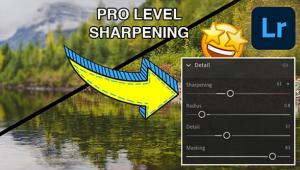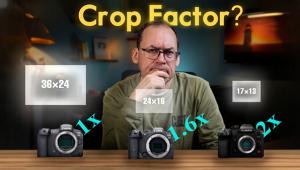Sekonic’s DualMaster L-558R Flash/Ambi Meter; Exposure Measurement Doesn’t Get Any Better Than This Page 2
Operating Modes
You can use the meter for reflectance and incident readings with available light
and flash. In fact, the meter will read both together to determine the level
of fill flash--it's called the "flash analyze" function.
For ambi measurement alone, the meter can be set for Aperture- or Shutter-Priority
or to display readings in EVs (Exposure Values). Flash readings are Shutter-Priority,
considering flash sync speeds.
When the L-558R is used with flash alone, readings can be made in Cord or Cordless
mode (flash analyze works in both). Cord mode makes use of the X-sync terminal
on the meter, triggering the flash from the L-558R. In Cordless mode, the flash
is popped independently while the meter is in standby. Or, as we mentioned,
the meter can be used for wireless flash triggering with the built-in radio
transmitter.
You can measure flash in individual bursts, or take cumulative measurements
with multiple pops of the strobe. The meter will produce a final read-out, while
counting strobe bursts. Why multiple pops? Sometimes the light is insufficient
to produce the needed depth of field as is. More light, resulting from multiple
bursts recorded in the same exposure, gives you greater depth of field (in place
of adding more lights or employing more powerful lighting).
In Conclusion
The Sekonic L-558R has proven itself in a number of tests. It didn't take
long to gain a working familiarity with the meter, although one or two of the
more esoteric functions did require more effort, not because of the meter but
because of poor instructions in the manual. That aside, all the buttons are
conveniently located, and there are only as many buttons as necessary, leading
to a smooth workflow.
I tested spot metering in skyline shots and incident metering with an indoor
still life. While the in camera meter's sophisticated evaluative metering
system produced competitive results with a range of test subjects outdoors,
the most dramatic difference can be seen when the camera is confronted with
bright porcelain dinnerware, in a still life. The underexposure using the in
camera meter was pronounced, whereas an incident reading with the L-558R produced
a good exposure without bracketing. I proceeded to test the meter's flash
analyze function after mixing strobe with window light, which again led to successful
results (getting the right mix of flash and daylight did take a few minutes).
But when all was said and done, the results and ease of use of the L-558R convinced
me to buy this meter.
(Sidebar) Why Bother With Contrast Readings?
The idea behind exposure control is to avoid a loss of important highlight or
shadow detail and poor lighting. After all, a good exposure captures detail
where it's needed, and properly positioned lights bring out important
features, while subduing others. If that something lurking in the shadows is
important to the picture and to the visual statement you're making, it
needs to be addressed before the shutter is released. Otherwise, you risk losing
valuable information. Even with digital capture, lost highlight and shadow detail
is lost detail. There is only so much you can do in Photoshop and still retain
the tonal and color integrity of
the image.
PROS
· Versatile, fast, and reliable
· Very readable high-contrast digital display plus analog scale (indicates
readings in memory), with additional internal display for spot readings
· Automatic backlight automatically senses low-light situations,
so no manual activation required
· Analyze function measures relative contribution of flash and available
light for better fill-flash photos
· Contrast measurement and averaging of multiple readings
· White dome can be quickly and efficiently recessed for lighting ratio
measurement without the need to switch to a flat diffuser
· 1Þ spot meter built-in, with diopter correction--operates
just like any dedicated spot meter
· Built-in wireless radio transmitter for compatible radio-receiver-equipped
strobe or camera
· All-weather design (but don't go swimming with it)
· Aperture-Priority, Shutter-Priority, and EV ambient-light readings,
plus cord/cordless flash and cumulative flash (and cine, for those who need
it)
· Front-threaded for filters, or you can manually input a digital
filter (or exposure) correction
· Custom settings (for example, to choose full, 1/2, or 1/3 steps--I
went with 1/3)
CONS
· Pricey (but worth every penny)
· Can be confusing, intimidating, and a bit much for novice users who
might better benefit from the simpler and less expensive Sekonic FlashMate L-308S
or Flash Master L-358
· Bulky (owing to the built-in spot meter)
· Incident turret rotates but no longer tilts as on some older Sekonic
meters (tilting made it easier to aim the meter from any position)
· Jog wheel is difficult to use with sweaty or wet hands
· Instruction manual is not always clear on procedures
The Sekonic DualMaster L-558R (only) costs $499 (street); the Sekonic X-Rite
Digital Suite costs $699 (street). For more information, contact Sekonic, 8
Westchester Plaza, Elmsford, NY 10523; (914) 347-3300; www.sekonic.com.
Also check out these websites: www.sekonic.com/Products/L-558R.html
and www.xritephoto.com/product/optixxr.
The X-Rite Factor: How Suite It Is...
The process of CRT and LCD monitor calibration and profiling is intimidating
to many of us. Just say the words and we cringe at the mere thought of it, and
especially at the cost in time, money, and effort. Have no fear: MonacoOPTIXXR
is an affordable package that takes the painstaking drudgery out of the process,
made even sweeter when bundled into the Sekonic X-Rite Digital Suite.
 |
Obviously, you're not going to spend $699 on this combo meter-and-monitor
calibration package if you already own a capable handheld meter, or successfully
tackled monitor calibration. This package is designed for those of us who want
to upgrade their light meter and either have no calibration/profiling tools
installed on the computer or are seeking an effective alternative. As tantalizing
as the entire package is, an initiate to handheld meters will likely find the
Sekonic L-558R meter overwhelming, with features you may never use--and
what a waste of good greenbacks that would be. It does seem a bit incongruous
to package such a fancy meter with such a basic and straightforward monitor
profiler. The Sekonic L-358 would have been a better choice for beginners (perhaps
Mamiya and X-Rite will consider offering an alternate package).
As for the MonacoOPTIXXR component in this package, it brings you MonacoOPTIX
software and an X-Rite colorimeter. X-Rite is well-known for its color/density-measurement
devices, dating back to analog photography days.
The colorimeter (the device placed over the screen for a series of measurements)
comes with a counterweight, so it doesn't test the limits of the thin
USB cable. For CRT monitors--and only CRT--there is a suction cup,
which acts like a mountain climber's carabiner to prevent slippage and
secure the device in place. Never use the suction cup on an LCD display, as
this may damage the screen.
Installing the software was effortless--and a mandatory first step. I plugged
the colorimeter into the USB port on my Dell (hardware driver installation came
next--also unproblematic on a Windows XP machine) and planted the device
on the CRT, after launching the software. The software graphically shows you
exactly where to position the device on the screen and guides you in the process
of calibration and profiling in very easy-to-follow steps. I had my new monitor
profile in minutes. I checked the computer's display settings to ensure
the new profile was in effect, and it was. MonacoOPTIXXR also supports Mac.
- Log in or register to post comments

































